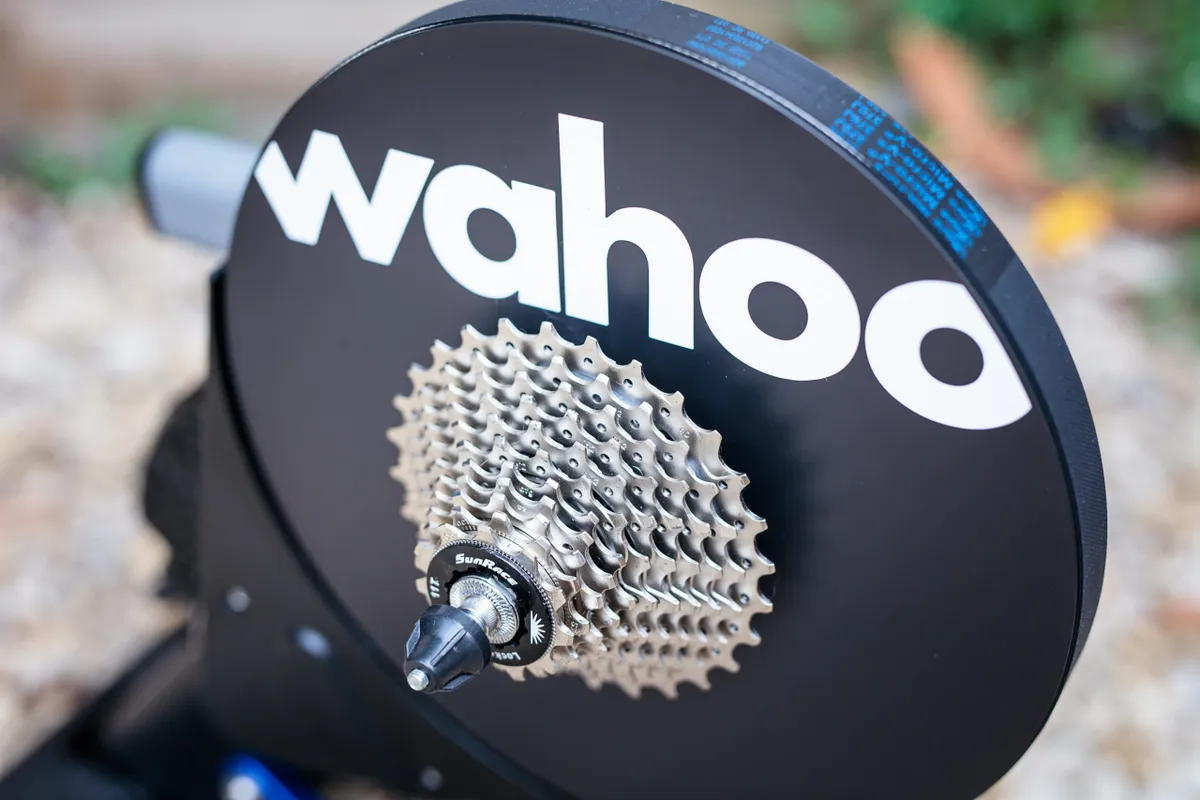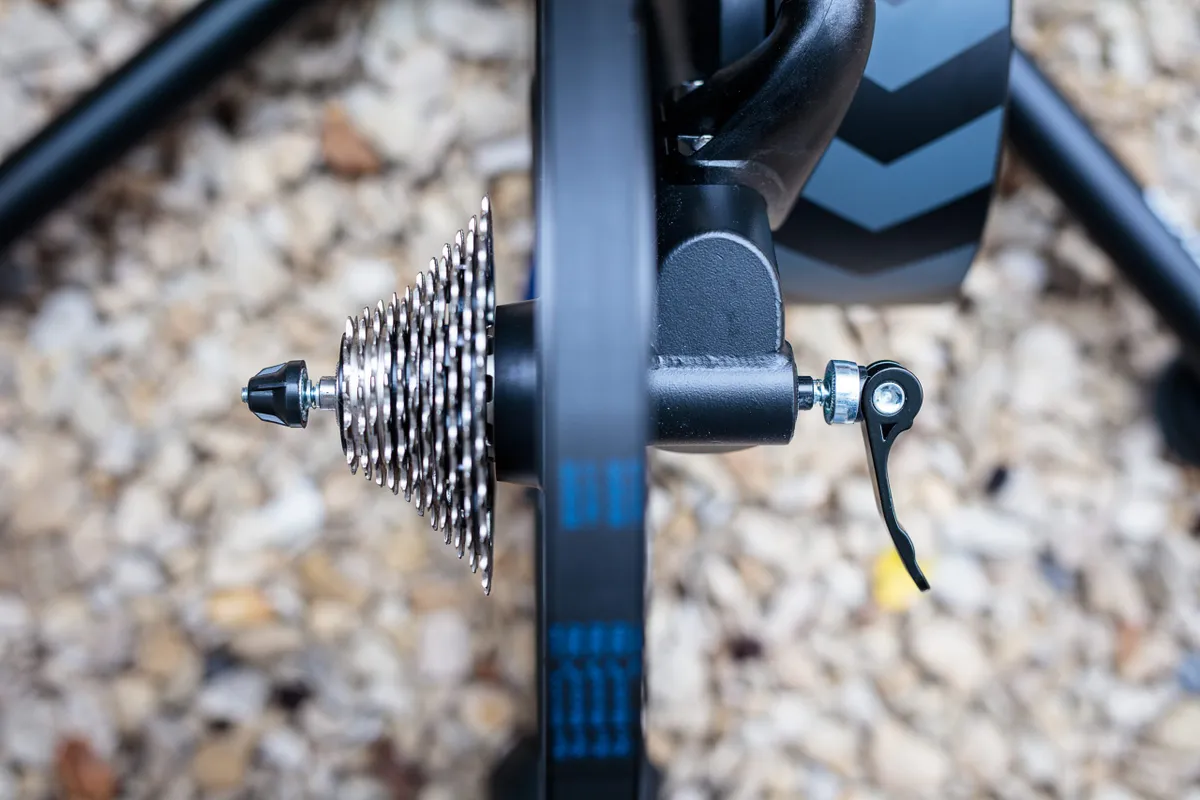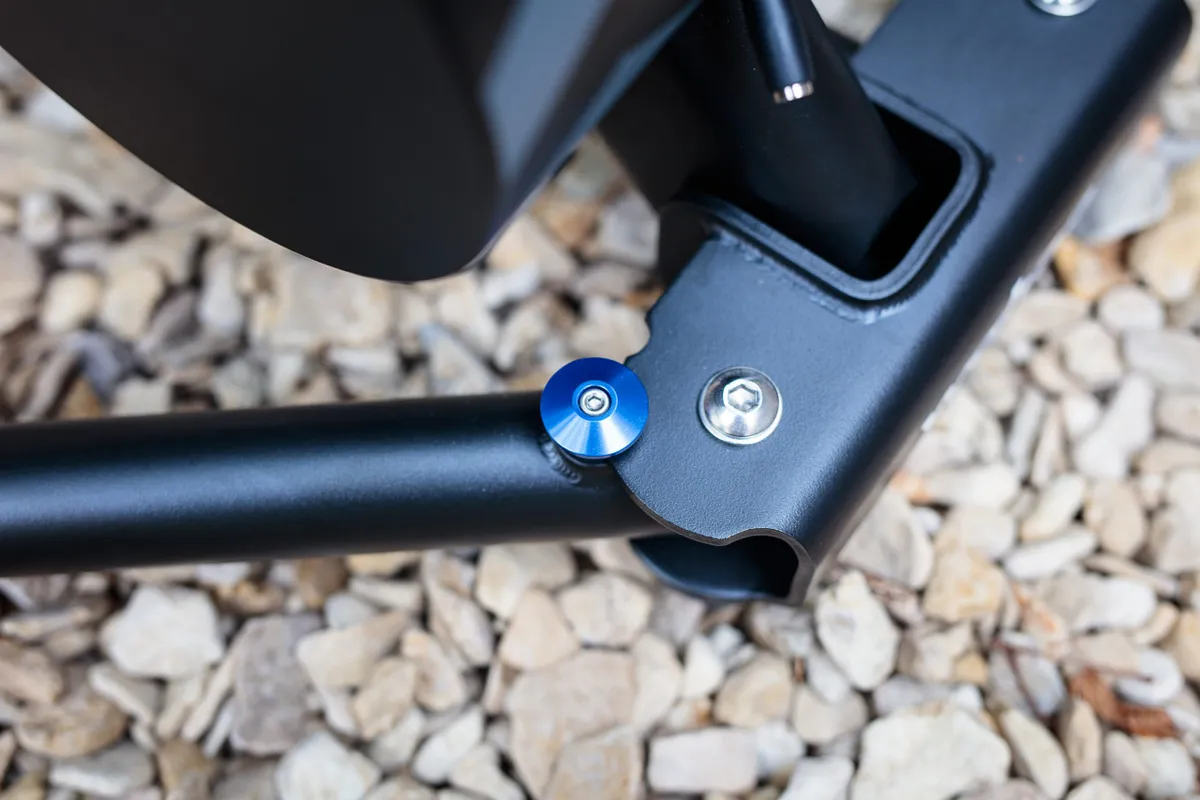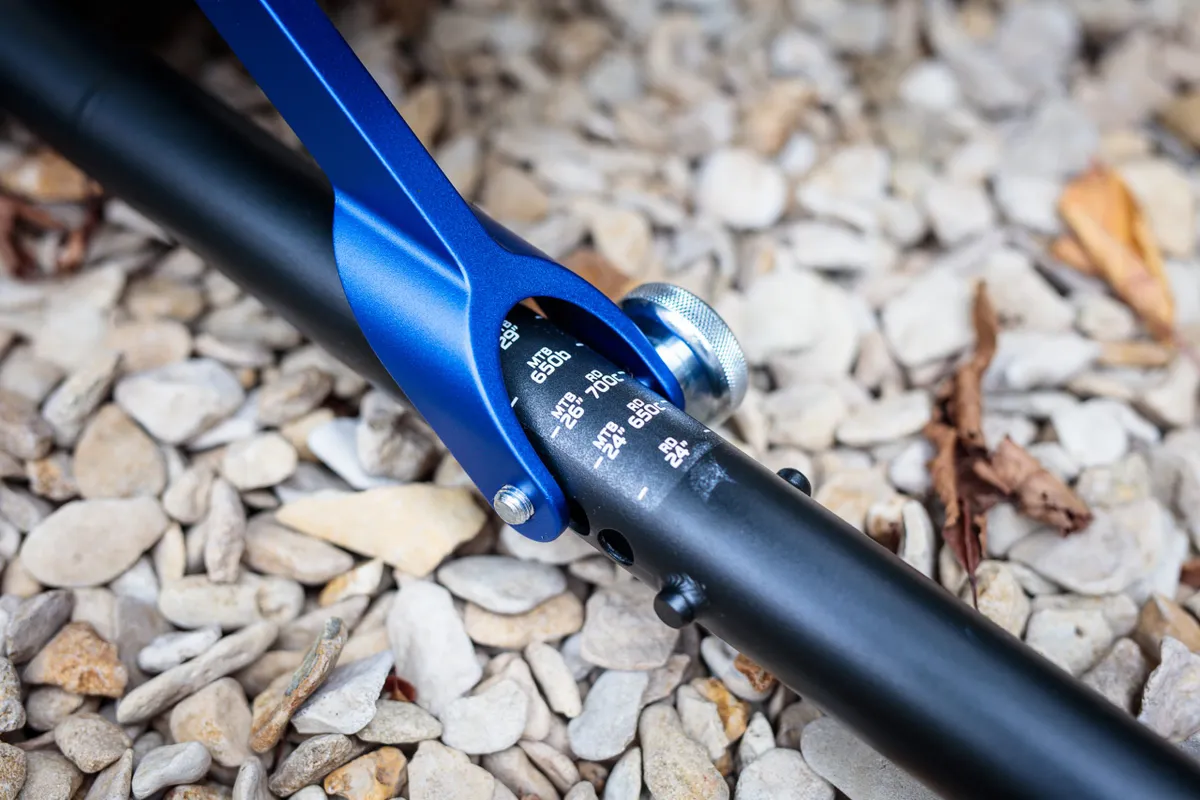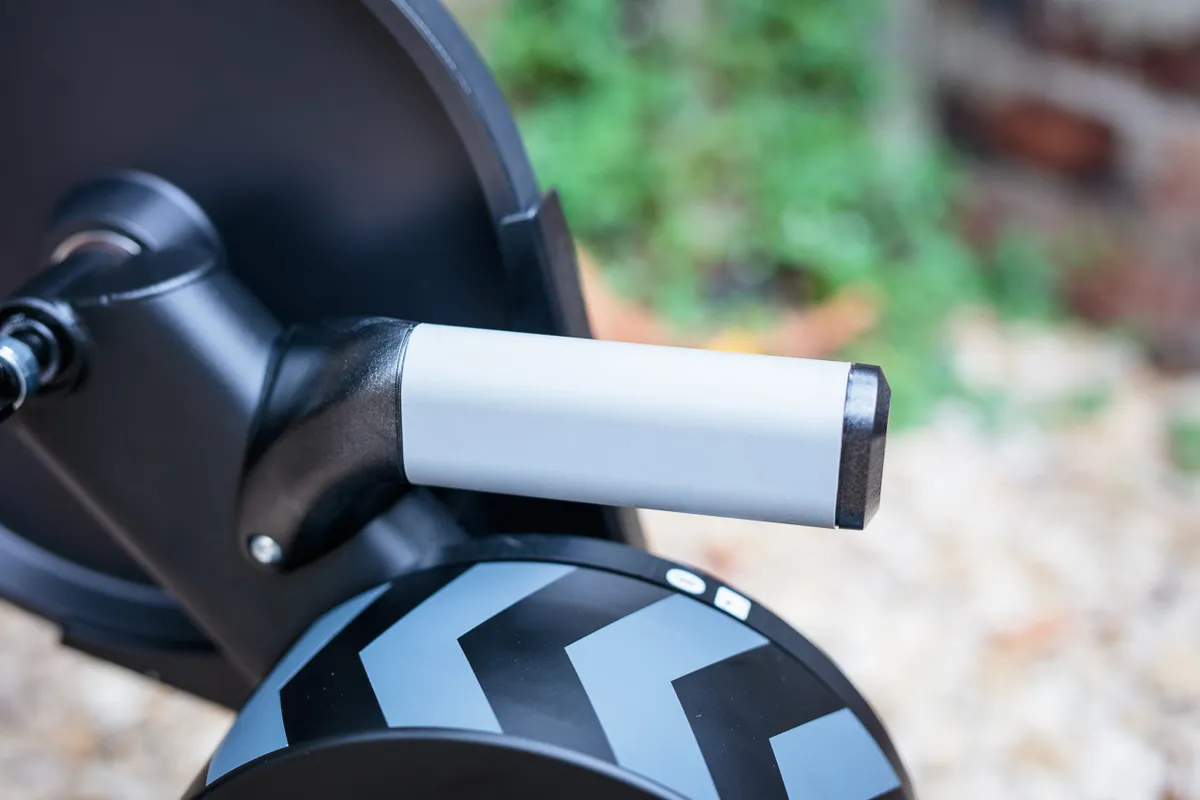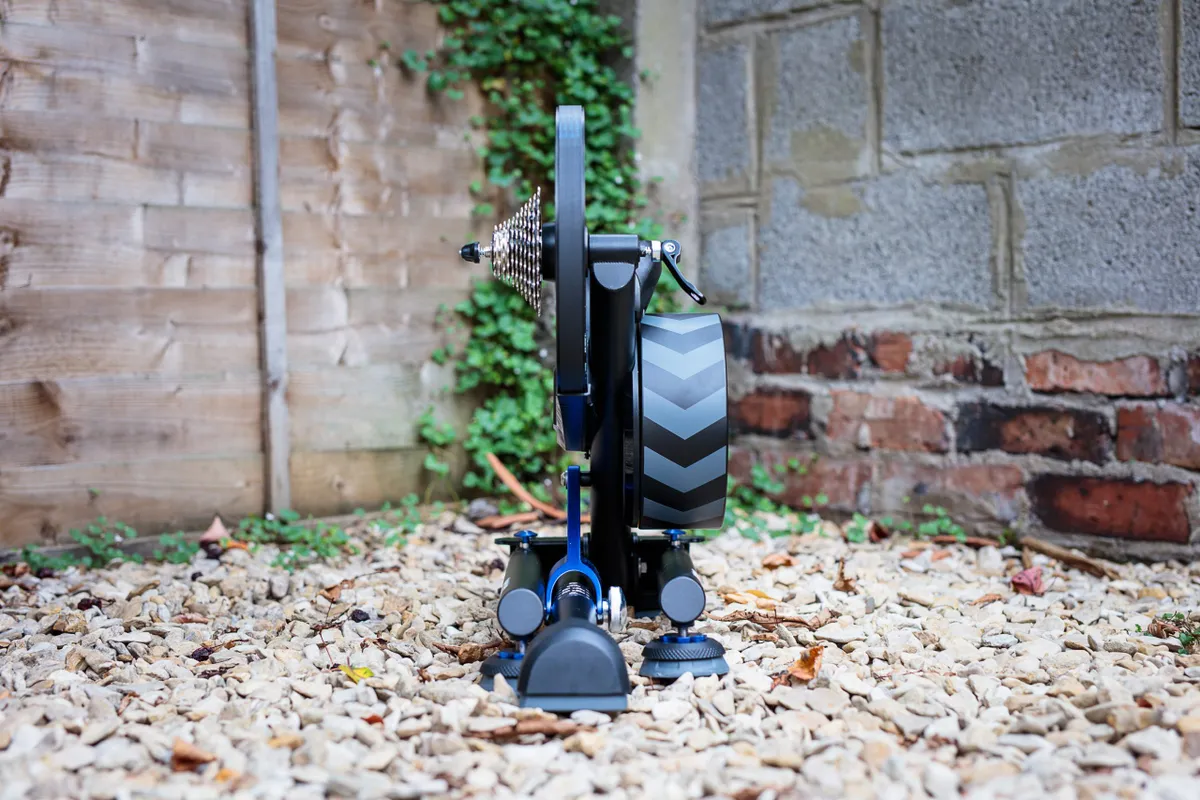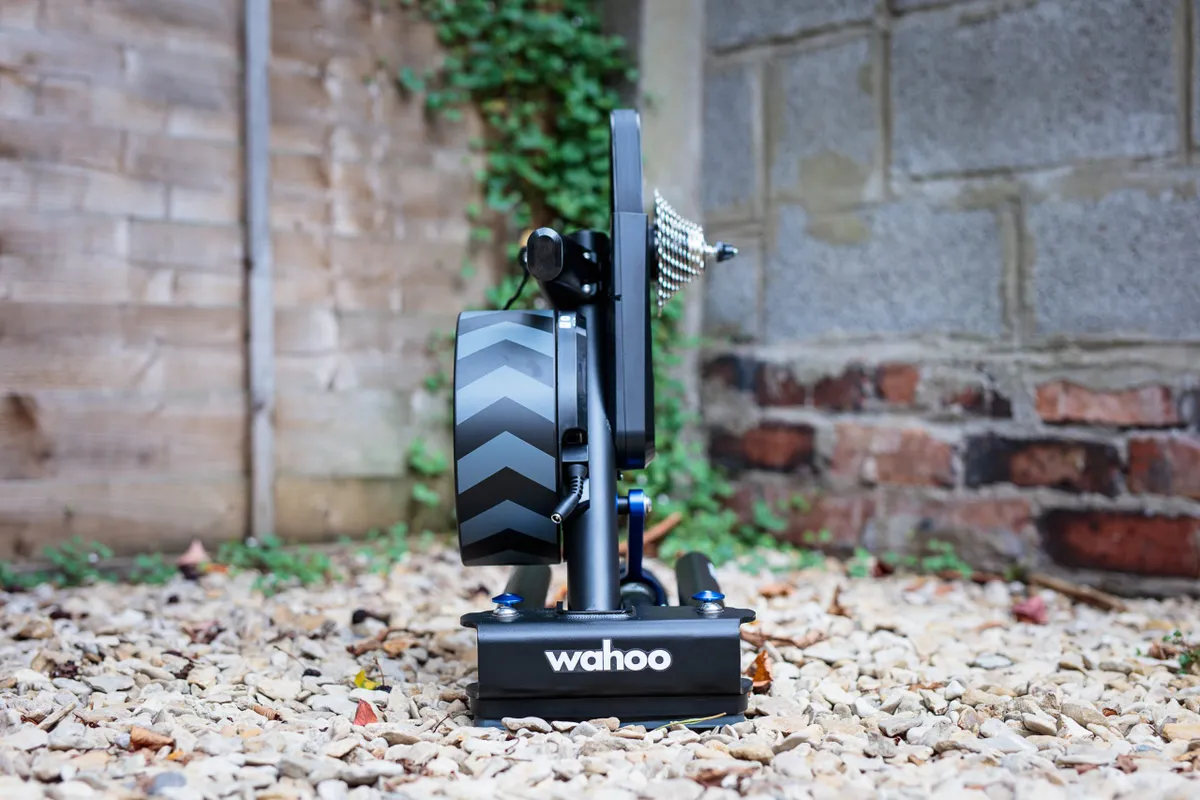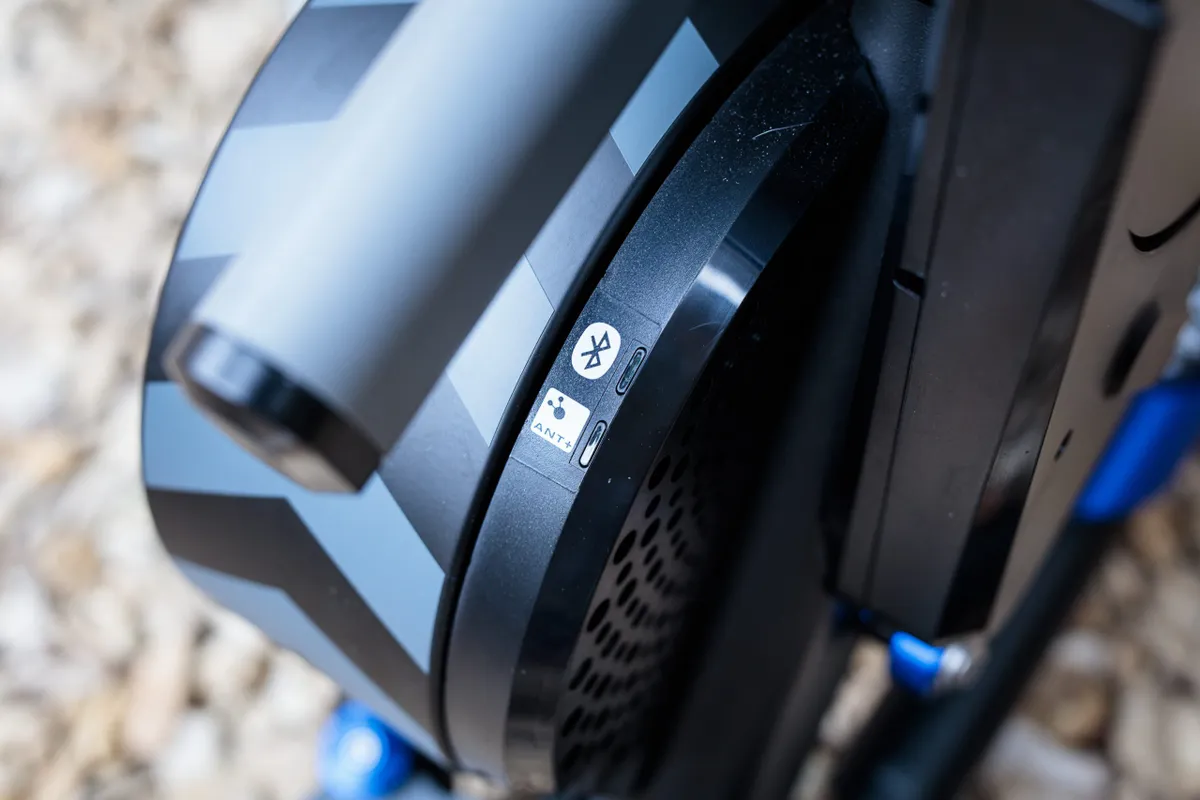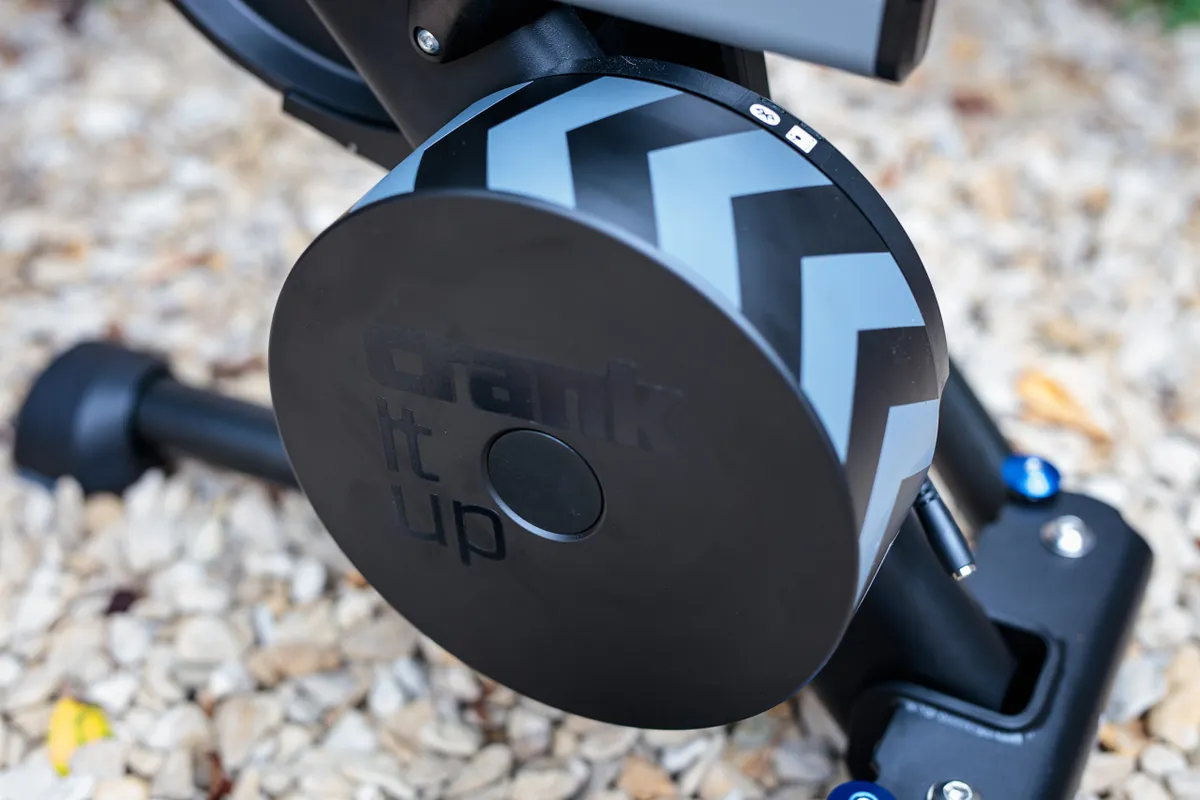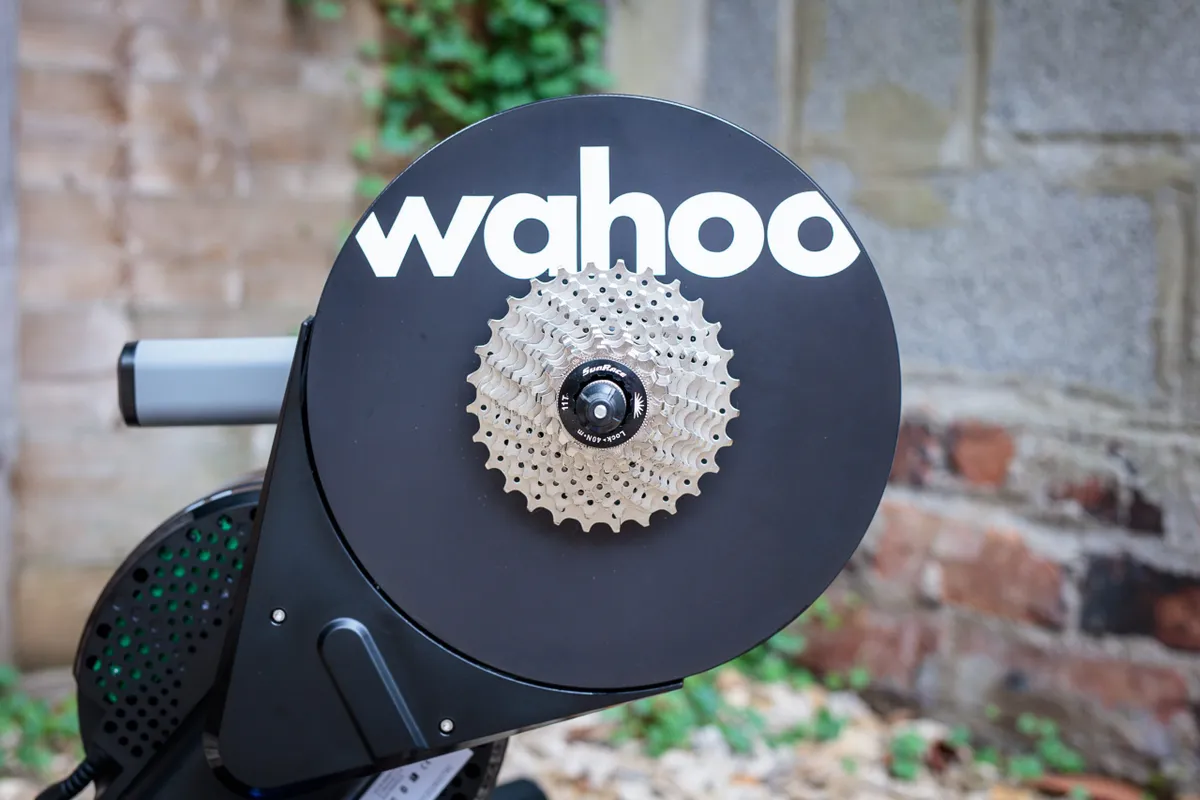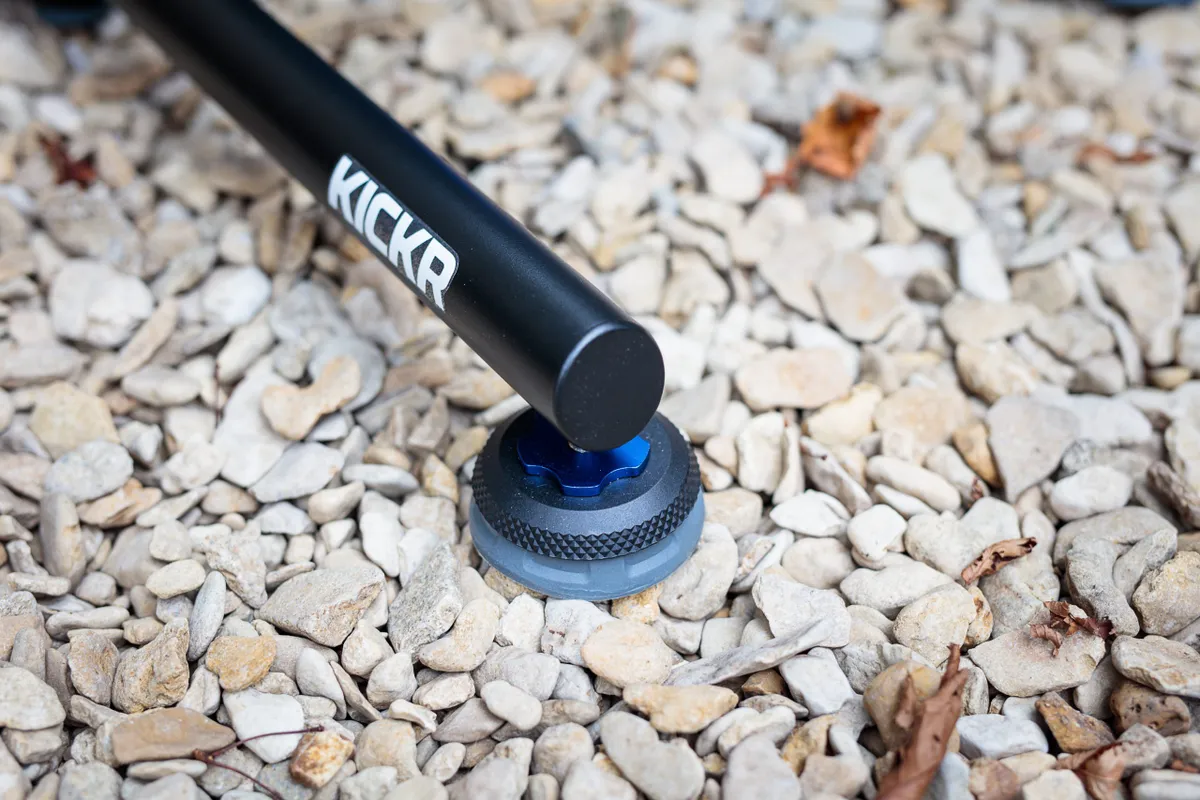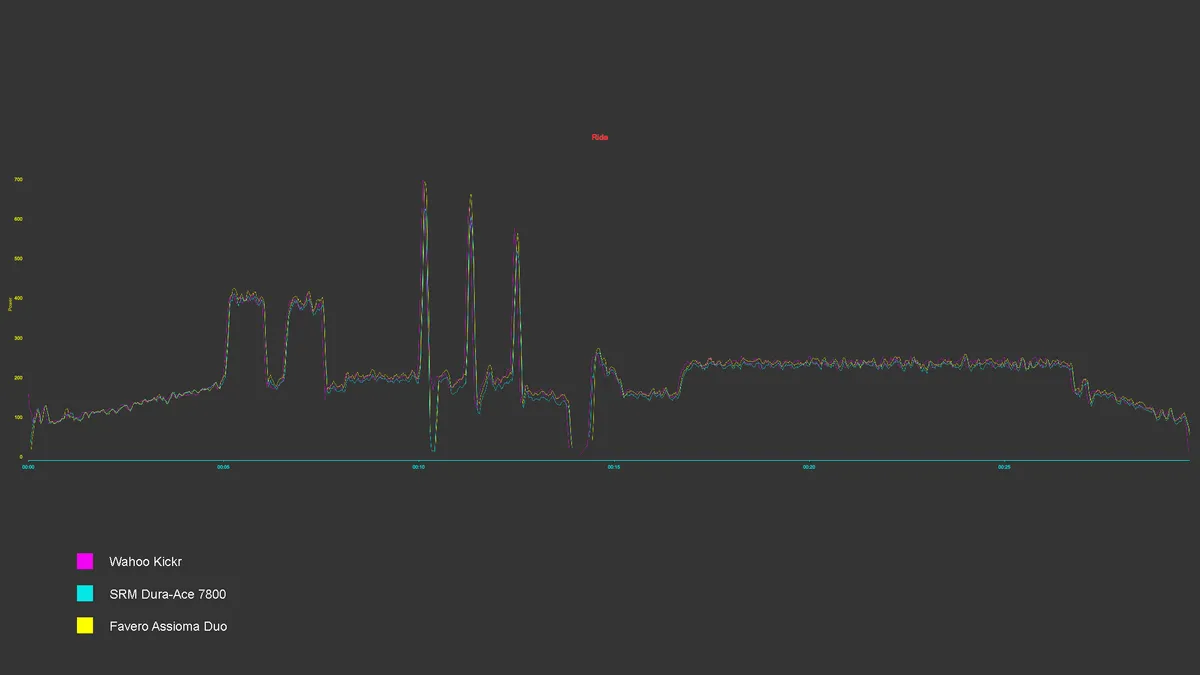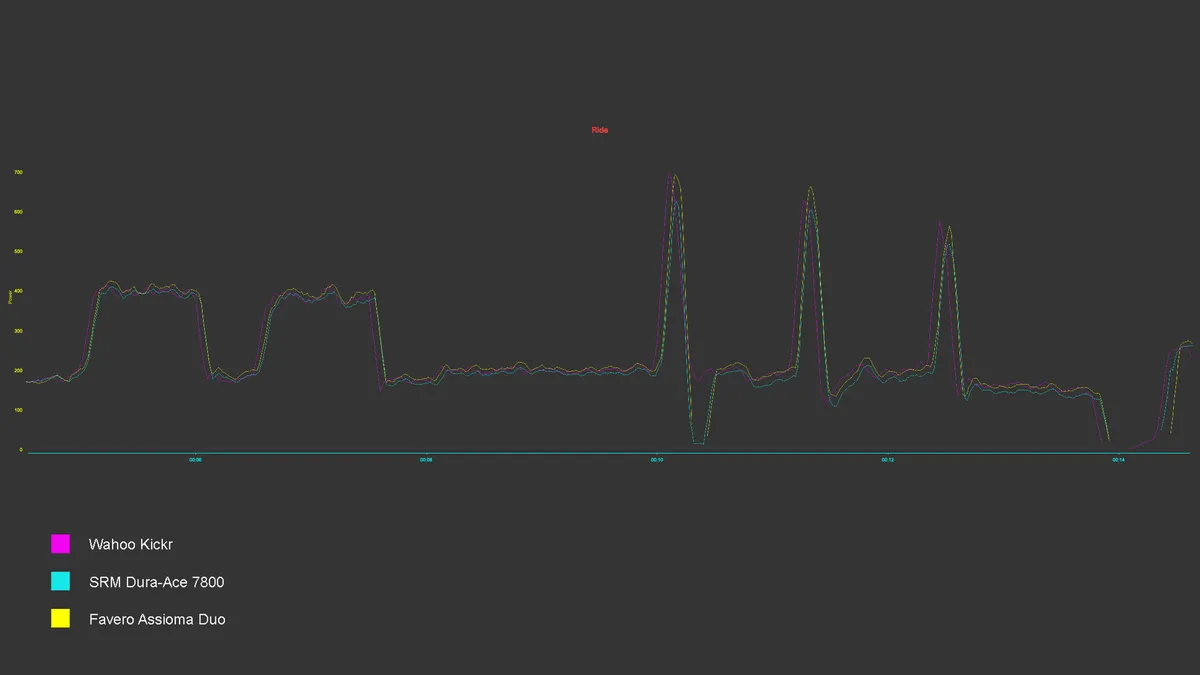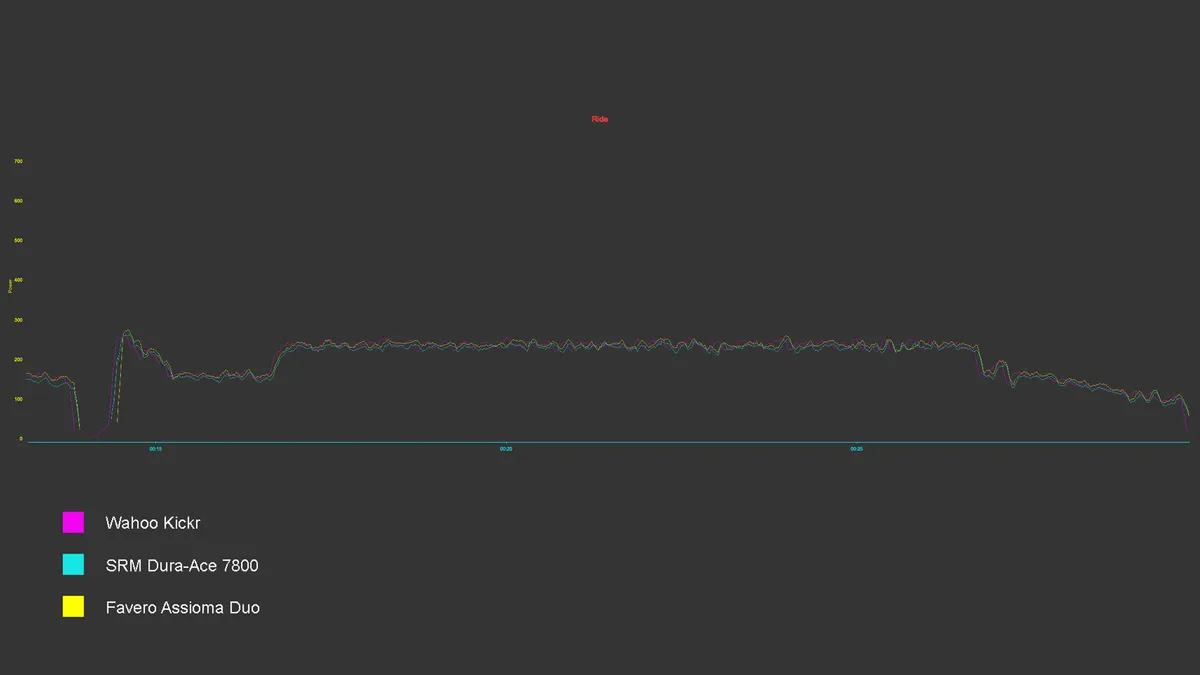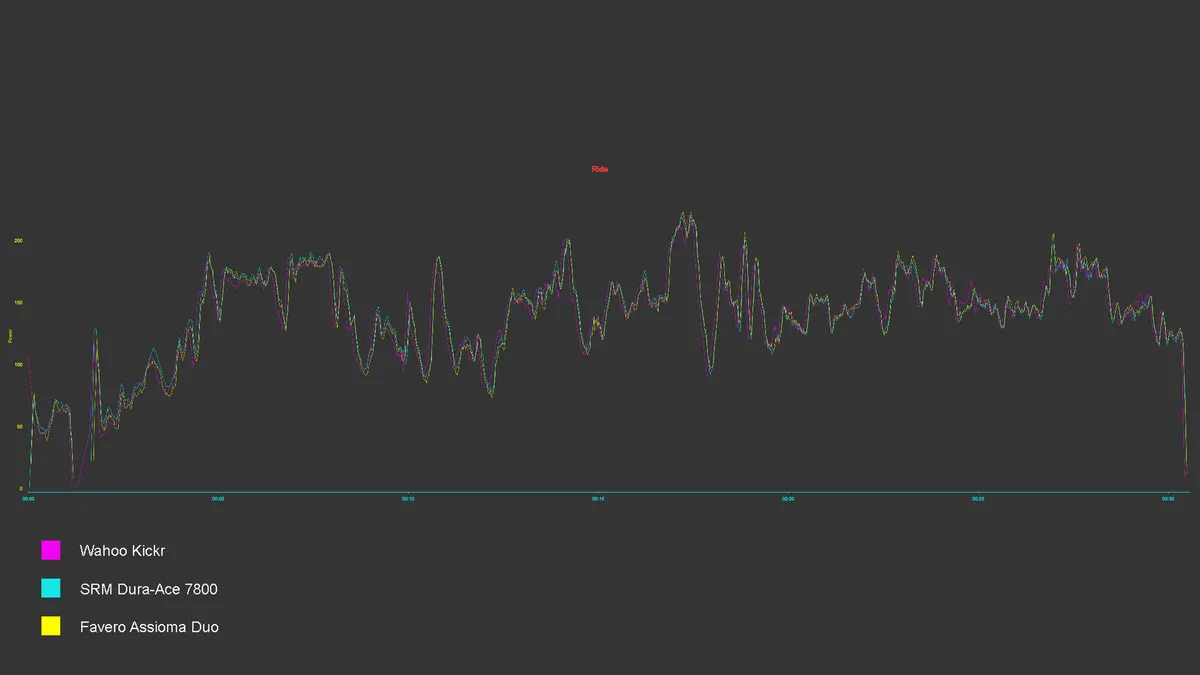Wahoo's latest revision to its top of the range Kickr smart trainer is more evolution than revolution, but that’s no bad thing.
Outwardly, the V5/2020 model is very similar to the Wahoo Kickr Smart Trainer V4/2019, which we also scored at a very healthy 4.5 stars, making it one of the best smart trainers. It shares the same 54cm × 71cm footprint as the previous model, but there are a few refinements and internal upgrades that make it a little better than before.
The headline changes are that the trainer's internal power meter accuracy is claimed to have increased from +/- 2 per cent to +/- 1 per cent, and that it is now able to automatically calibrate itself without a traditional spin down.
Interestingly, that +/- 1 per cent claimed accuracy range is tighter than that found on Wahoo’s Kickr Bike, so perhaps that will also see an update at some point.
Additionally, Wahoo has amended the trainer's supporting feet (called the Axis feet) to allow for five degrees of lateral tilt, to help give a more realistic ride feel.
The price, at £999.99 / $1,199 / €1,199.99 / AU$1,799.95, is also unchanged compared to the previous Kickr.
Wahoo Kickr unboxing and setup
The Kickr comes almost completely assembled, meaning setting it up is a breeze. The two support legs simply fold out and both the Axis feet and the height of the flywheel are easily adjustable.
There are three different top caps for the Axis feet included, which are designed for riders of different weights. These top caps spread the load across the foam feet differently so that all riders experience the correct amount of tilt.
By default, the medium sized caps are installed, which have a weight range of 63 to 81kg. If your body weight falls outside of that range, you’ll need to swap to either the smaller caps or larger caps, but this can be done by hand – the feet just screw on and off.
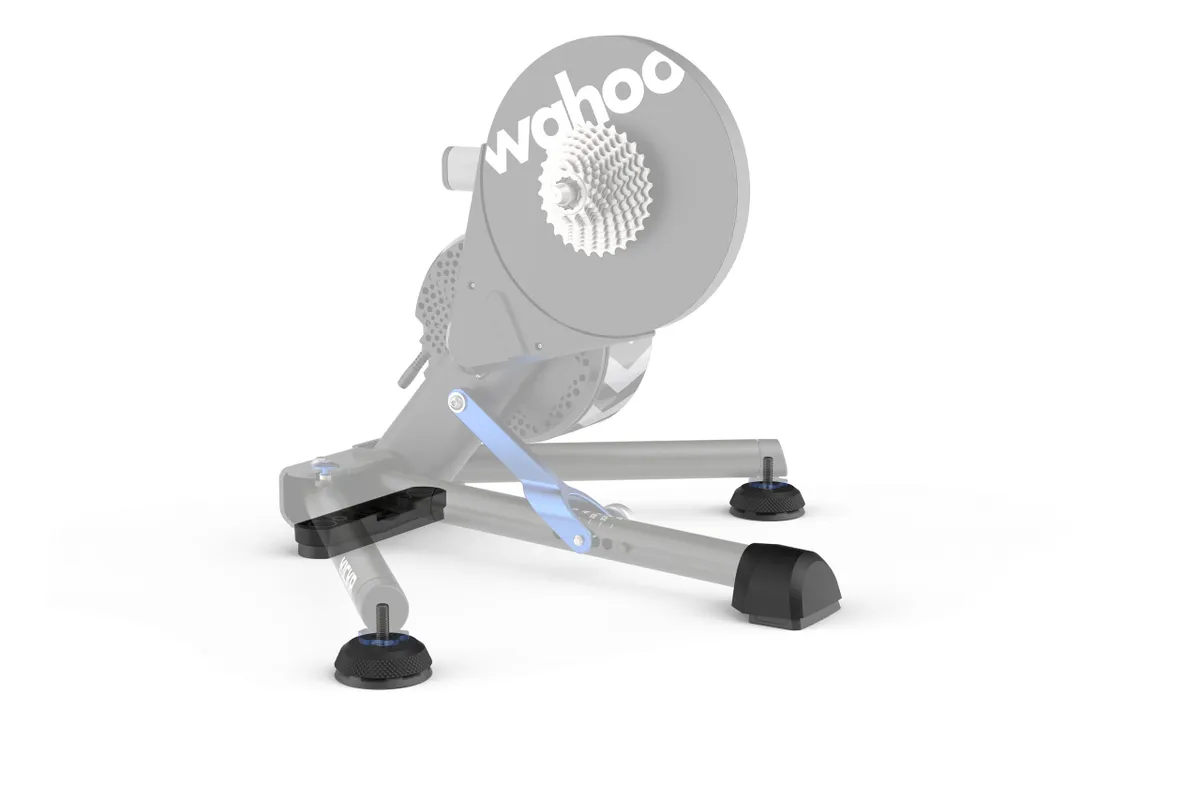
It also comes with an 11-speed, 11-28-tooth cassette installed, which not every smart trainer does (even at the higher end of the pricing spectrum). Campagnolo and XDR / XD freehubs are available to purchase separately for £49.99 / $69.99 / €59.99 and £59.99 / $69.99 / €59.99 respectively.
Currently, a Shimano Micro Spline freehub isn’t available, though Wahoo did say it is monitoring demand for this, suggesting it would release one if there was enough interest.
Wahoo also noted that there are 12-speed cassettes, such as the SRAM NX Eagle PG-1230, that offer 12-speed compatibility on the stock 11-speed Shimano/SRAM freehub.
Out of the box (with the cassette and quick release skewer installed), the unit weighs 21.9kg. Fortunately, it has an integrated handle that makes moving it around a lot easier.
The Kickr also folds away for storage in a reasonably compact fashion too, due to the support legs folding in and out.
As a default, it comes equipped for road bikes with standard quick-release axles, but adaptors for 12 × 142mm and 12 × 148mm thru-axles are included in the box, so those with disc brake bikes won’t be left out.
Changing the axle adaptors is a simple, tool-free job too. You just remove the quick-release skewer and the axle end caps can be swapped by hand.
All that’s left to do is plug it in. The included cable is thankfully long enough that most people won’t need an extension lead.
Wahoo Kickr connectivity and ride
The Wahoo Kickr is compatible with ANT+, ANT+ FE-C and Bluetooth Low Energy devices, meaning you can pair it with your ANT+ cycle computer or to an iOS or Android tablet or phone. Alternatively, you can use an ANT+ dongle to connect it to a computer or other devices without Bluetooth LE support.
The Kickr transmits speed, distance, power and cadence data, and has a max power of 2,200 watts, compared to the 1,800 watt ceiling of Wahoo’s cheaper Kickr Core. That’s not a figure I can even get close to tickling, and frankly I suspect most reading this won’t be able to either, but it could be useful to have if you’re an absolute powerhouse.
More usefully, if you like to punish yourself, it can exert a higher level of pedalling resistance. This means it’s able to simulate a maximum gradient of 20 per cent, versus the Kickr Core’s 16 per cent. It can also simulate descents of up to 10 per cent.
Wahoo does now have its own indoor cycling app, Wahoo SYSTM. You can also pair the trainer with the rest of the best indoor cycling apps such as Zwift, RGT Cycling or TrainerRoad.
Personally, I’m a Zwift user, so that’s what I used to test the Kickr, but it is worth downloading Wahoo’s app so you can quickly and easily update the trainer’s firmware.
You can also use the Wahoo app to perform spin-down calibrations. This is a method of zero-offsetting the trainer's built in power meter, by bringing it up to a predetermined speed then coasting down to 0kph.
Doing this allows it to determine the power required to overcome the friction of the flywheel belt and bearings, so it can account for this and correctly determine your power output.
With the Kickr, it's also possible to do a spin-down calibration in Zwift, which is arguably much more convenient. Wahoo claims that with this latest unit you won’t need to do these spin-down calibrations though, because it now has the ability to automatically calibrate itself.
Wahoo told us it does this by continually monitoring the speed, temperature and brake setting of the trainer to automatically determine the level of friction in the system. It then automatically adjusts the calibration values as required.
Nevertheless, I still performed a spin-down calibration after setting the unit up initially and, like with any power meter, I'd generally suggest performing this kind of calibration/zero-offset after any major temperature shift, or if the unit is moved to a new location, to ensure maximum accuracy.
Using a Macbook Pro with Zwift, the trainer connected quickly via Bluetooth and I didn’t experience any issues with dropouts while riding either.
In use, the 7.25kg flywheel contributes to an excellent ride feel, and it reacts pleasingly quickly to changes in virtual gradient or to intervals done with ERG mode turned on. Like the previous version, it’s also very quiet – producing less noise than even my scrupulously clean drivetrain.
The new Axis feet do contribute a little tilt. It’s not especially noticeable while generally riding, but the trainer does feel less bolted in place underneath you than a standard trainer when climbing out of the saddle or sprinting, without feeling at all sloppy. It’s marginal, but I do think it’s an improvement.
I did experience one ERG mode lock-up (sometimes called a ‘spiral of death’) during testing. This happens when your cadence drops too low, so the trainer piles on more resistance, causing your cadence to drop even lower, and so on until you grind to a complete stop. As you might expect, this usually happens when you’re fatigued – at the end of a sprint, for example.
In the middle of trying to grind it out, I thought the solution was to reach for my phone and briefly turn off ERG mode using the Zwift Companion app. Wahoo did say, however, that if you come to a complete stop for a few seconds, the Kickr will release the brake and let you start pedalling at normal cadence again before resuming ERG mode at the prescribed power setting.
Wahoo Kickr power meter accuracy
As already mentioned, Wahoo claims power accuracy has increased with this latest model – up to +/- 1 per cent, from +/- 2 per cent on the previous version.
I'm not in a position to validate whether it is in fact a percentage point more accurate than before, but I can confirm it consistently agreed with my other on-bike, benchmark power meters, an SRM Dura-Ace 7800 and a set of Favero Assioma Duo pedals.
Though I’ve only had the unit for a few weeks, I haven’t had any concerns about the quality or consistency of data.
As usual, before any data was captured for comparison I did a short ride to allow all of the devices to settle in and come up to operating temperature, then performed a zero offset across both power meters and a spin-down calibration on the trainer.
Wahoo Kickr overall
The new Kickr is another impressive smart trainer from Wahoo. Yes, it’s a lot of money to spend on an indoor trainer, but it’s price is in the same ballpark as other high-end competitors
It’s a highly refined system and ticks practically all the boxes you could ask of it. Wahoo also has an impressive ecosystem of smart trainer accessories, such as the Kickr Climb and Kickr Fan, that can enhance your indoor cycling experience even further (if you’re willing to invest in them).
The only real question is whether you need to spend this much money on a smart trainer, full stop. As usual with bike tech, the gains as you go up the price scale are quite marginal.
Wahoo’s cheaper offering, the Kickr Core, offers similarly impressive performance for about £300 less, for example. Do you really need 2,200 watts of maximum resistance instead of 1,800 watts? To climb 20 per cent gradients in your living room instead of 16 per cent ones? Or +/- 1 per cent accuracy instead of +/- 2 per cent?
For some, the answer to those questions will be ‘Yes’, but for many it’s perhaps less clear cut.
All things considered, though, it is an undoubtedly excellent smart trainer and anyone who gets their hands on one is likely to be very satisfied with it for a long time.
Product
| Brand | Wahoo |
| Price | A$1799.95, €1199.99, £999.99, $1199.00 |
| Weight | 21.90kg |
Features
| Mount | direct_drive |
| Folding legs | yes |
| Trainer type | smart_trainer |
| Resistance type | electromagnetic |
| Wheel size | 26in |
| Wheel size | 27_5in_650b |
| Wheel size | 29in_700c |
| Connectivity | antPlus |
| Connectivity | antPlus_fe_c |
| Connectivity | bluetooth |
| Device compatibility | android |
| Device compatibility | ios |
| Device compatibility | mac |
| Device compatibility | windows |
| Max power | 2200.0000 |
| Max power | WATT |
| Flywheel weight | 7.2500 |
| Flywheel weight | KILOGRAM |
| Max grade (degrees) | 20.0000 |
| Dimensions | 54cm x 71cm (footprint) |
